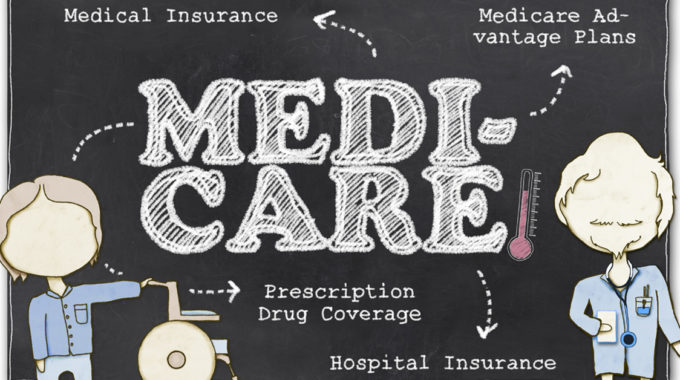
Original Medicare or Medicare Advantage: What Stanford Economists Say
It’s almost here: the time of year when seniors get to decide between original Medicare or a Medicare Advantage plan. Open enrollment is October 15 to December 7, and there is a big decision to be made. Information comes from all angles, but original Medicare puts itself at a bit of a disadvantage. While private insurance companies selling Medicare Advantage plans run commercials galore and send sales reps, Medicare does no marketing. This means the burden is often on seniors themselves to get all the information and truly compare plans. Fortunately, economists from Stanford University’s Department of Economics recently published a large and important study in The American Economic Journal.1 This study provides objective information about the real world differences between original Medicare and Medicare Advantage plans. Here, we’ll summarize some of those differences as well as get some opinion and insight from Investopedia.
What Are Medicare Advantage Plans?
Medicare Advantage plans are health insurance plans from private insurance companies, but that use and replace a senior’s Medicare benefits. Now seniors have choice in how their Medicare benefits are received. This is sometimes referred to as Medicare Part C, because that is the section of Medicare regulation that created the opportunity for private insurance companies to administrate Medicare benefits. The companies providing the most Medicare Advantage policies include: UnitedHealthcare, Humana, Blue Cross / Blue Shield, CVS, and Kaiser Permanente. Enrollment in Medicare Advantage plans has grown from 18% of Medicare beneficiaries in 1999 to 34% in 2019.
Advantage Plans Take Away Your Traditional Medicare
The first thing seniors need to understand is that Medicare Advantage plans replace traditional Medicare coverage. It’s easy to confuse Advantage plans with Medigap policies or supplemental policies which add to your traditional Medicare coverage. Advantage plans may even include supplemental insurance. But make no mistake. When you have Medicare Advantage, you do not have original Medicare. Except for hospice benefits, Medicare Advantage and traditional Medicare are either / or.
Original Medicare Spends More on Patients
One of the primary findings of economist Vilsa Curto and her colleagues from Stanford University is that original Medicare spends 33% more per patient. Patients with Medicare Advantage plans cost more overall, but those plans spend less on actual patient care. Advantage plans keep 30% of the Medicare money for themselves and pay for other things such as executive salaries and shareholder profits.
Advantage Plans Provide Less Care and Fewer Options When Patients Are Really Sick
Advantage plans often restructure the benefits to save seniors money on everyday expenses such as meds. How can Advantage plans spend more on meds while spending less on patients overall? One factor is that people with Advantage plans receive less care and fewer options when they are really sick. Here’s what Curto and colleagues found:
- People with Advantage plans are more likely to go straight home from the hospital and less likely to enjoy recuperation time and rehabilitation at a nursing home.
- People with Advantage plans have fewer choices in healthcare providers and may be forced to choose from agencies agreeing to the lowest reimbursement. People with traditional Medicare are free to choose any credentialed provider and to pick providers based on quality of care.
- People with Advantage plans are less likely to receive care from specialists. To see a specialist, Advantage plans typically require a referral from another doctor and an approval from the insurance company. With original Medicare, patients have direct access to specialists without referrals or insurance company denials.
- With Advantage plans, after surgery, people are more likely to be sent straight home. With traditional Medicare, patients are more likely to get to stay in the hospital for post-surgical care.
Advantage Plans May Not Have Nationwide Networks
Investopedia’s Tim Parker notes that Advantage plans often only operate in certain regions.2 People who travel or snowbird may find themselves paying high, out-of-network fees. Original Medicare, on the other hand, pays the same throughout the country.
Original Medicare Offers Fewer Surprises
Investopedia’s Lita Epstein writes, “The most comprehensive coverage, which will likely result in the fewest unexpected out-of-pocket expenses, is a traditional Medicare plan paired with a Medigap policy.”
To switch to a Medicare Advantage plan, call the insurance company of your choice. To switch to original Medicare, call 1-800-MEDICARE.
References:
- Curto V, Einav L, Finkelstein A, Levin J, Bhattacharya J. Health Care Spending and Utilization in Public and Private Medicare. American Economic Journal: Applied Economics. 2019 Apr;11(2):302-2.
- Parker T. Medigap vs. Medicare Advantage: What’s the Difference? Investopedia. April 23, 2019.
- Epstein L. Pitfalls of Medicare Advantage Plans. Investopedia. June 25, 2019.






